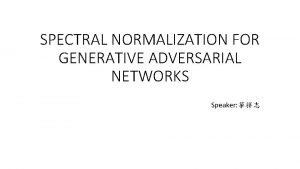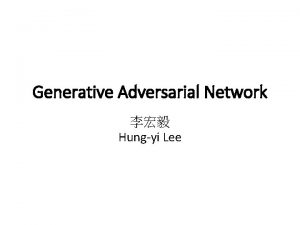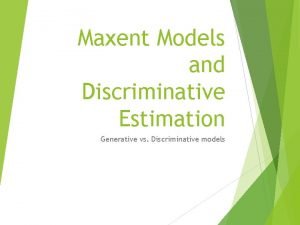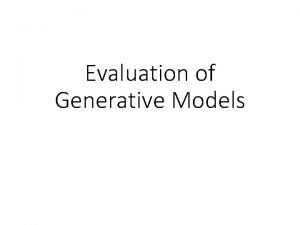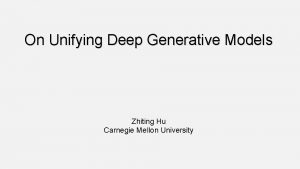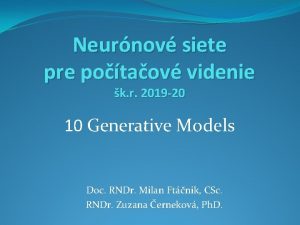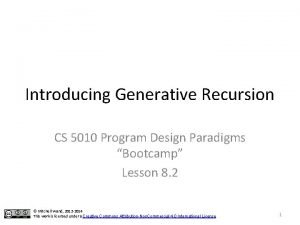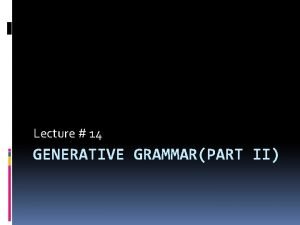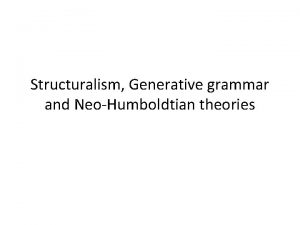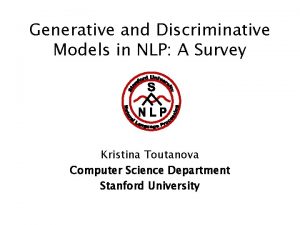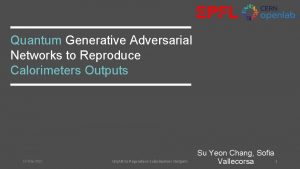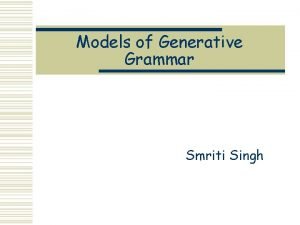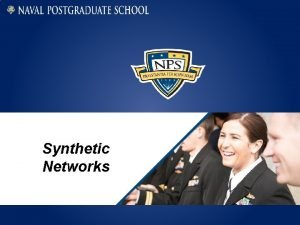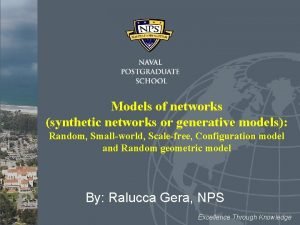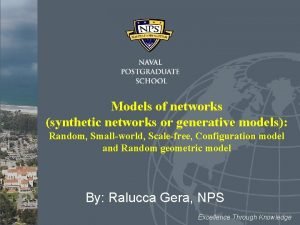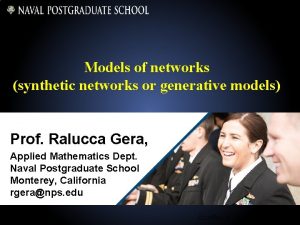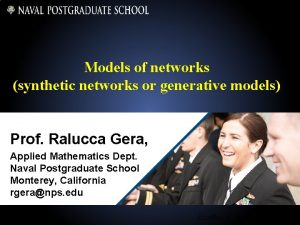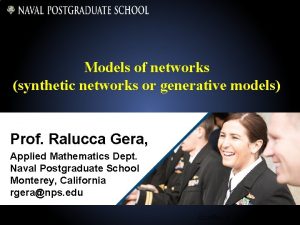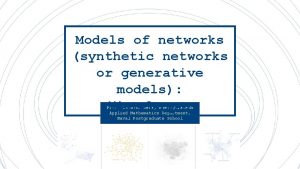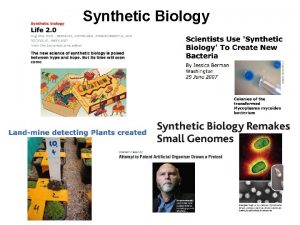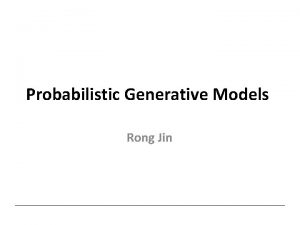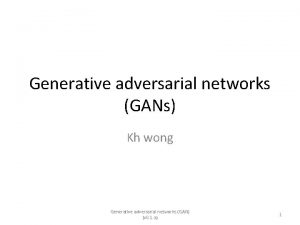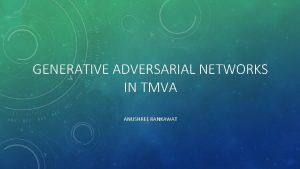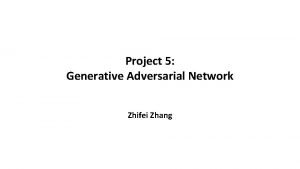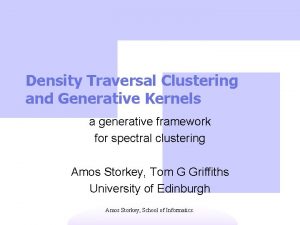Models of networks synthetic networks or generative models

















- Slides: 17

Models of networks (synthetic networks or generative models): Barabási -Albert Prof. Ralucca Gera, rgera@nps. edu Applied Mathematics Department, Naval Postgraduate School Excellence Through Knowledge

Learning Outcomes • Identify network models and explain their structures; • Contrast networks and synthetic models; • Understand how to design new network models (based on the existing ones and on the collected data) • Distinguish methodologies used in analyzing networks.

Scale free: arabási-Albert model (1999) 3 https: //upload. wikimedia. org/wikipedia/commons/d/d 4/Barabasi_Albert_1000 nodes. png

Network growth & resulting structure Random attachment: new node picks any existing node to attach to Preferential/fitness attachment: new node picks from existing nodes according to their degrees/fitness (high preference for high degree/fitness) https: //www. researchgate. net/figure/Sample-Barabasi-Albert-network-structures-for-different-densities-of-links-represented_fig 1_267762305

Scale-free • https: //bioinformatics. stackexchange. com/questions/14568/power-law-distribution-alpha-values

Power law networks • Many real-world networks contain hubs: highly connected nodes • Usually, the distribution of edges is extremely skewed many nodes with small degree No “typical” degree node fat tail: a few nodes with a very large degree

of that degree But is it really a power-law? Log of number of nodes • A deviation from a straight line could indicate a different distribution: exponential lognormal log of the degree

Fitting distributions European Airlines Transportation Network's layers with distribution fitting: • Node count (frame) and • Edge count (inset) 8 http: //faculty. nps. edu/rgera/ANGEL. html

Fitting distributions European Airlines Transportation: Ø Degree histogram of the multiplexes with: • log scale in the inset. Ø Upper right: average shortest path, Ø Lower right: centrality http: //faculty. nps. edu/rgera/ANGEL. html 9

Barabási-Albert Model • Generation Scale Free networks https: //www. wikiwand. com/en/Barab%C 3%A 1 si%E 2%80%93 Albert_model 10

Generating BA networks in Gephi 11

Generating BA networks in Python http: //networkx. lanl. gov/reference/generated/networkx. generators. random_graphs. barabasi_albert_graph. html#networkx. generators. random_graphs. barabasi_albert_graph 12

13 • Many modifications of this model exists, based on: Modified Barabási. Albert • Nodes “retiring” and losing their status/outdated • Nodes disappearing (such as website going down) • Links appearing or disappearing between the existing nodes (called internal links) • Fitness of nodes (modeling newcomers like Google) • Most researchers still use the standard BA model when studying new phenomena and metrics. • It is a simple model (allows consistent research) that has growth and preferential attachment • One can add more conditions to this basic model, in order to mimic reality

A zoo of complex networks

Random, Small -World, Scale -Free Scale Free networks: High degree heterogeneity Various levels of modularity Various levels of randomness Man made, “large world”: https: //www. researchgate. net/figure/A-zoo-of-complex-networks-In-this-qualitative-space-three-relevant-characteristics-are_fig 4_225782040 15

16 Back to coding in Co. Calc

Main References • Newman “The structure and function of complex networks” (2003) • Estrada “The structure of complex Networks” (2012) • Barabasi “Network Science” (online: http: //barabasi. com/networksciencebook/) • References to the classes that exist in python: • http: //networkx. lanl. gov/reference/generators. html 17
 Melody randford
Melody randford Spectral normalization for generative adversarial networks
Spectral normalization for generative adversarial networks Generative adversarial networks
Generative adversarial networks Discriminative classifier
Discriminative classifier A note on the evaluation of generative models
A note on the evaluation of generative models Normalizing flow
Normalizing flow Zhiting hu
Zhiting hu Taxonomy of generative models
Taxonomy of generative models Generative recursion
Generative recursion Generative grammar examples
Generative grammar examples Generative thinking boards
Generative thinking boards Generative thinking definition
Generative thinking definition From structuralism to transformational generative grammar
From structuralism to transformational generative grammar Generative meditation
Generative meditation Deep and surface structure examples
Deep and surface structure examples Nlp generative model
Nlp generative model Quantum generative adversarial learning
Quantum generative adversarial learning Phrase structure rules
Phrase structure rules

